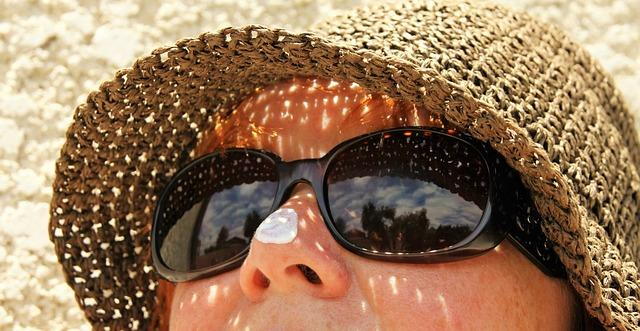
Sunscreen: Good or Bad?
With summer right around the corner, many are looking forward to enjoying vacations and outside activities. I would like to offer some tips on how you can enjoy being outside with friends and family while getting safe sun exposure without using toxic chemicals.
The Problem With Conventional Sunscreen Ingredients
It’s important to understand that our skin is an organ. Anything that touches our skin (that’s permeable) enters our blood stream in about 30 seconds. That could pose a problem if you’re slathering your skin with poisonous chemicals.
Ingredients in sunscreen should not cause skin irritation or allergic reactions and should be able to withstand UV rays without losing their effectiveness or forming harmful breakdown products. Some sunscreens include ingredients that act as penetration enhancers that help the product adhere to the skin. As already mentioned, these chemicals can be absorbed into and can be measured in blood, breast milk and urine samples.
Active ingredients in sunscreen come in two forms, mineral and chemical fillers. Each of these fillers use a different mechanism for protecting the skin. The most common sunscreens on the market contain chemical fillers. These products typically include a combination of two to six ingredients: oxybenzone, avobenzone, octisalate, octocrylene, homosalate and octinoxate. Mineral sunscreens use zinc oxide or titanium dioxide.
From the Environmental Working Group:
“The Food and Drug Administration has not reviewed evidence of potential hazards of sunscreen fillers - instead it grandfathered in ingredients used in the late 1970’s when it began to consider sunscreen safety. The Danish EPA recently reviewed the safety of active ingredients in sunscreen and concluded that most ingredients lacked information to ensure their safety (Danish EPA 2015). Sixteen of nineteen ingredients studied had no information about their potential to cause cancer. And while the published studies suggest that several chemical fillers interact with human sex or thyroid hormones, none of the ingredients had sufficient information to determine potential risks to human from hormone distruption.
The EWG has reviewed the existing data about human exposure and toxicity for the nine most commonly used sunscreen chemicals. The most worrisome is oxybenzone, added to nearly 65% of the non-mineral sunscreens in EWG’s 2017 sunscreen database. Oxybenzone can cause allergic skin reactions (Rodriguez 2006). In lab studies it is a weak estrogen and has potent anti-androgenic effects (Krause 2012).
The CDC has detected oxybenzone in more than 96% of the American population, based on a representative sampling of children an adults (Calafat 2008). Participants who reported using sunscreen have higher oxybenzone exposures (Zamoiski 2015). Investigators at the University of California, Berkeley recently reported a dramatic drop in teen girls’ exposure to oxybenzone in cosmetics when they switched from their usual products to replacements that did not contain this chemical (Harley 2016).
Mineral Sunscreens
Mineral sunscreens are made with zinc oxide and titanium dioxide, usually in the form of nanoparticles. There is good evidence that little if any zinc or titanium particles penetrate the skin. In my opinion, mineral sunscreens are better than chemical sunscreens. It is important, however, that manufacturers use forms of minerals that are coated with inert chemicals to reduce photo activity.
Inactive Ingredients
Inactive ingredients make up 50-70 percent of a sunscreen product. One ingredient, in particular, is a cause for concern: methylisothiazolinone, which is a preservative. This ingredient has been found on labels on 94 sunscreens including six marketed to children. Methylisothiazolinone is used alone or in mixtures with a related chemical preservatives.
Lab studies showed that methylisothiazolinone is a skin sensitizer and allergen. This chemical has been found in baby wipes and personal care products as well as sunscreen.
In my opinion, if you’re going to use sunscreen, use a mineral product or find another product that doesn’t have any toxic chemicals. Another option would be to get safe sun exposure (about 40 minutes of direct sunlight in bathing suit attire at midday) then cover with a shirt and hat. Remember, the sun is still the best source of vitamin D3 and you don’t want to avoid it altogether. Just make sure when you’re choosing what you put on your body, do it wisely.
